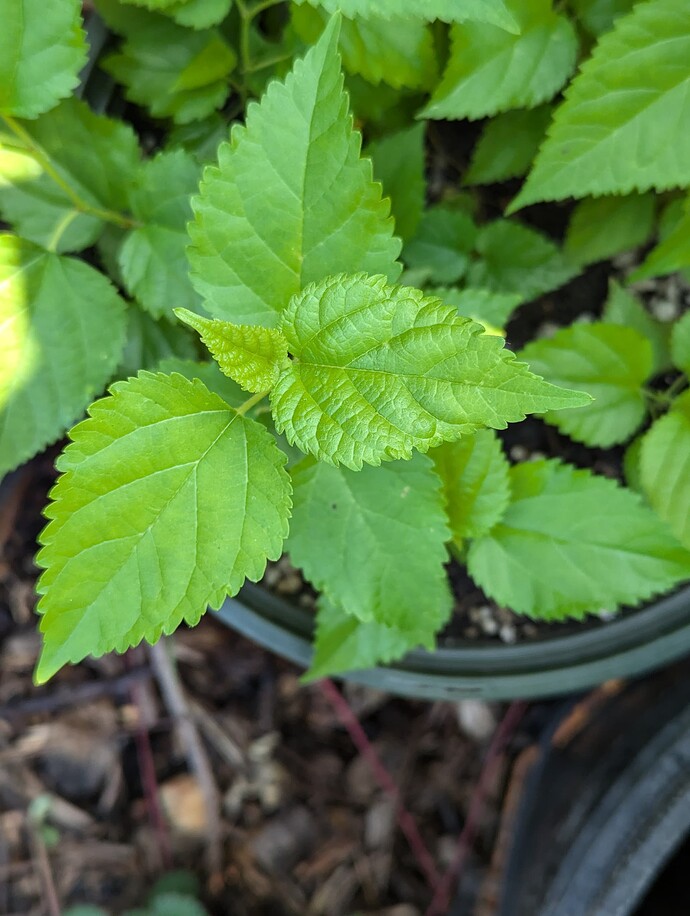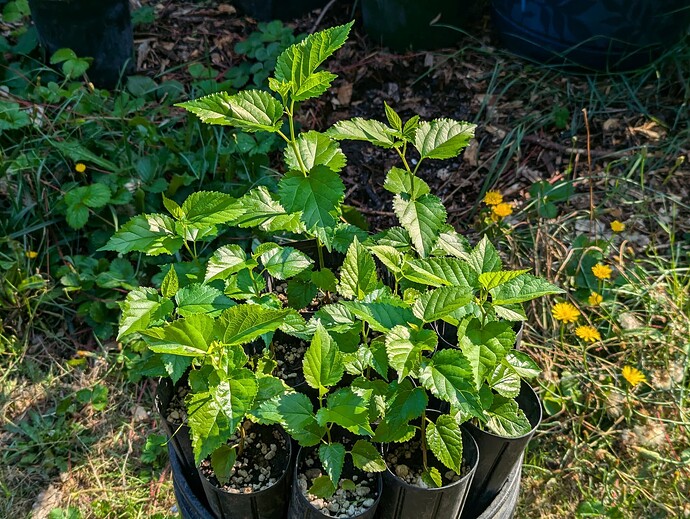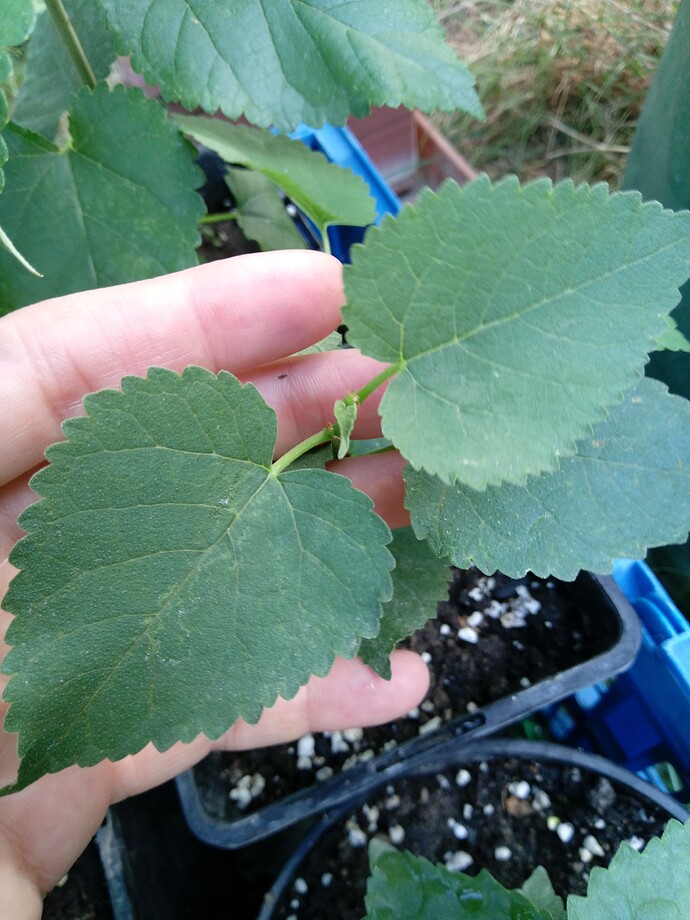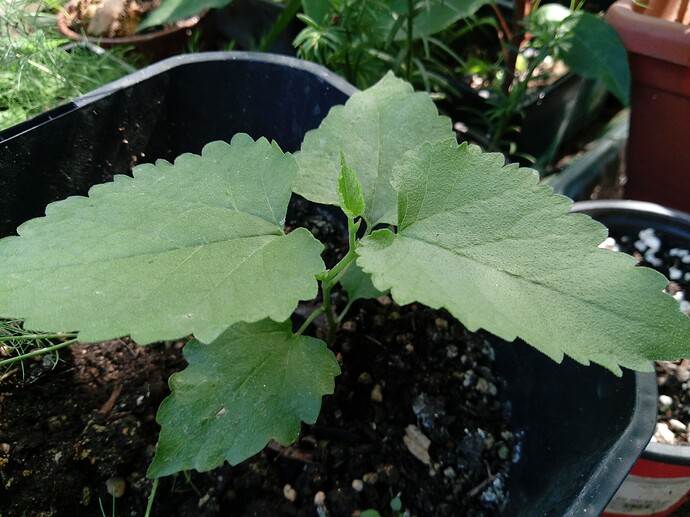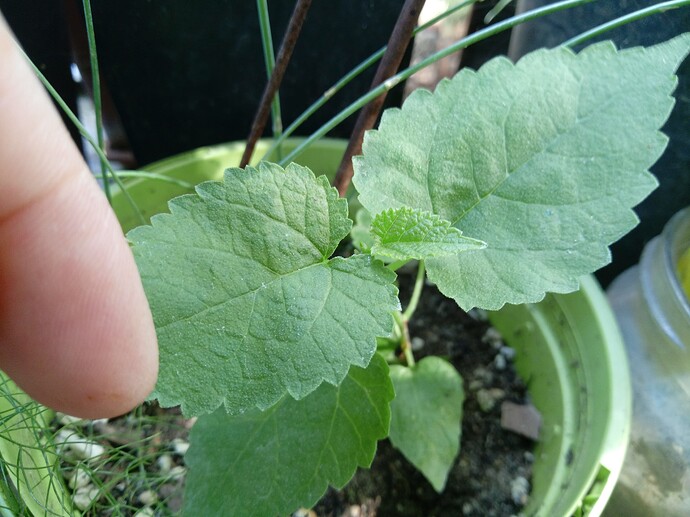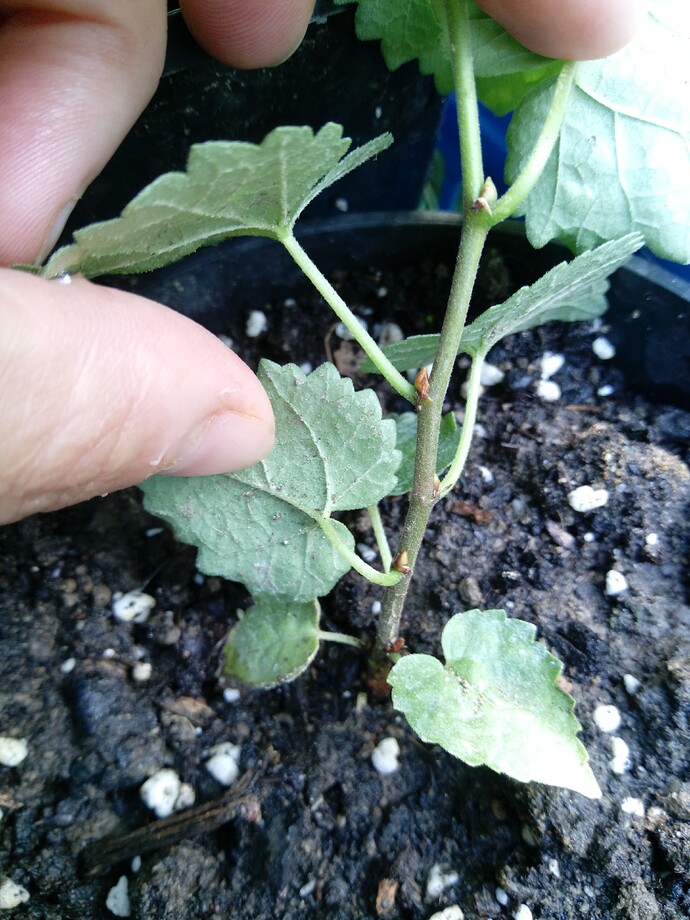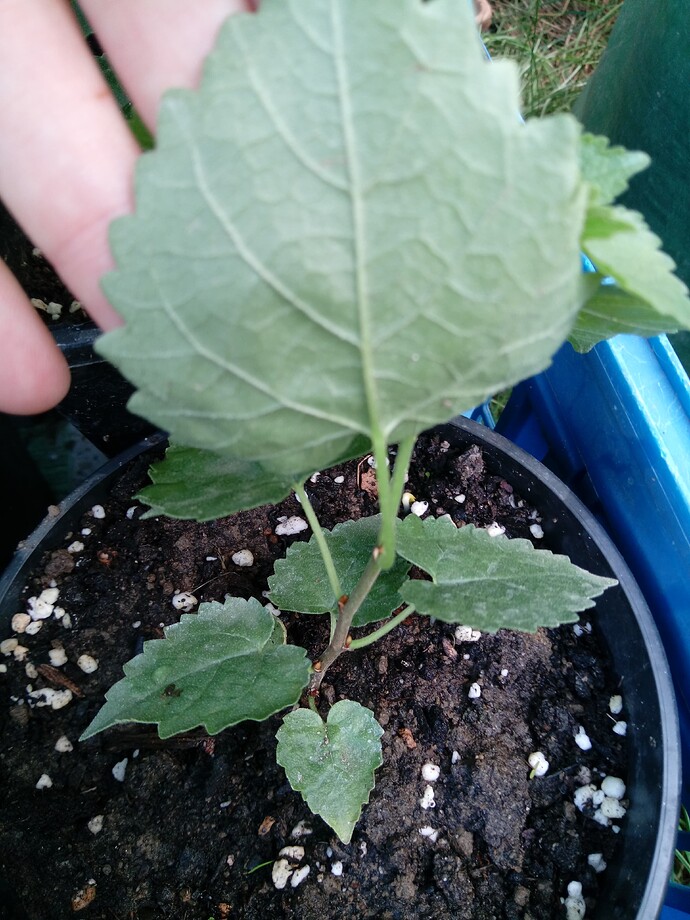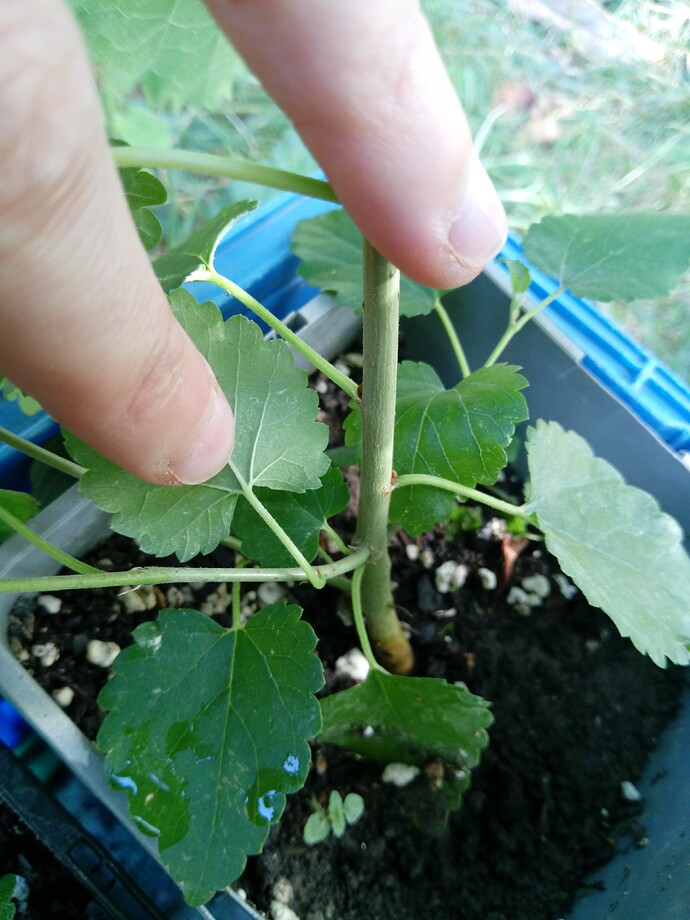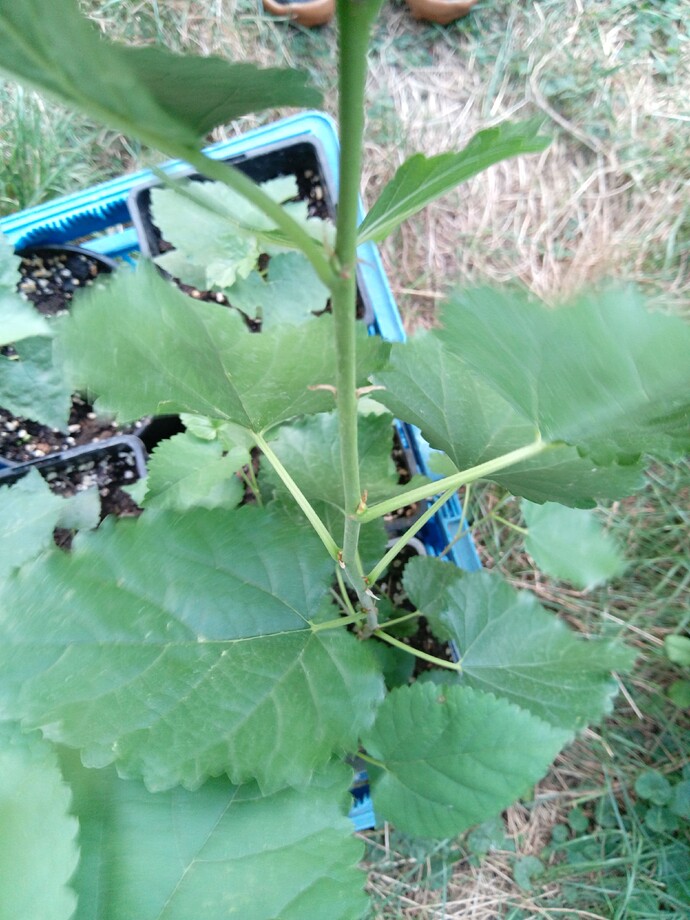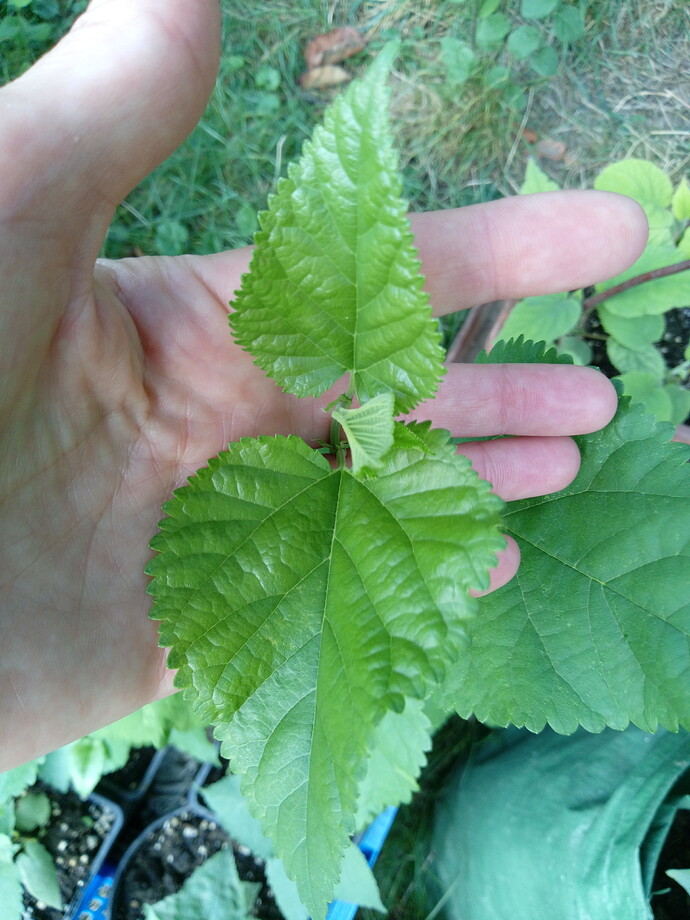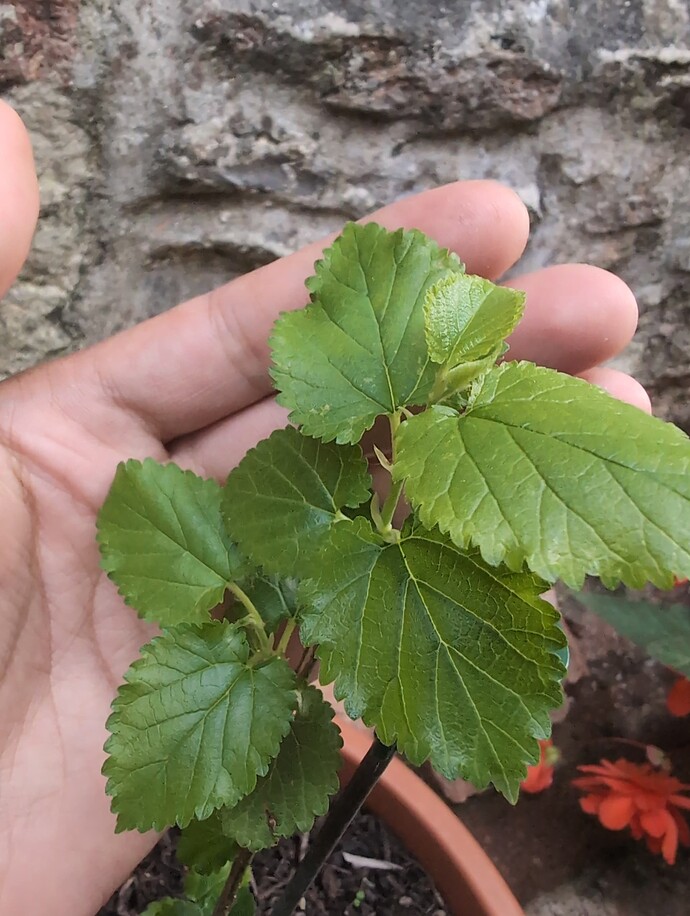The alleged nigra seedlings from the Sheffield’s seed lot from India are looking very alba to me. But since I’ve never seen immature nigra leaves in person (just when posted by @Tana here), I can’t be sure. Anyone have any thoughts on these? I’ll probably get them ploidy tested next spring.
Agree that they look like alba. Too glossy for nigra. Nigra leaves are dull and almost fig-like
The thread “Purple reign” is all about Morus nigra and has a lot of good info
It would be great to add “Morus nigra” to the name of the topic.
What’s worked for me for random seeds i collect from the wild, is to just throw them down, put some soil on top and hope they sprout next season ![]() i did the same for the giant blueberries i got but i think i accidentally weeded them cause i forgot what i did. But the super sweet strawberries i threw down are doing good. They caught powdery mildew though so I’m fighting that with them right now.
i did the same for the giant blueberries i got but i think i accidentally weeded them cause i forgot what i did. But the super sweet strawberries i threw down are doing good. They caught powdery mildew though so I’m fighting that with them right now.
For the harder seed, you can put a tiny knick in them too and they usually do pretty well for me until i forget and weed them then wake up in the middle of the night remembering what i did…
That would likely work in some situations better than others. I did directly sow about 500 mulberry seeds in an outdoor nursery bed, and they sprouted okay but 100% were eaten as sprouts. So I’ve had much better luck in pots where I can try to keep them out of reach of the slugs, snails, earwigs, pill bugs, mice, squirrels, corvids, and whoever else decides to forage that area. Apparently most herbivores, big and small, find mulberries to be delicious. I do think it’s mostly snails and slugs, though.
Well, I’ve taken that down. Looking back, I’ve found it confusing and I’ve also found enough albas sprouting in pots where they shouldn’t be and in nearby bare soil courtesy of our resident thrushes, that I wouldn’t bet a potato on the one being a nigra.
However, it turns out, that the nigras I thought were stunted due to some bacterial or micro-mite infestation were just being normal nigras. The new ones I have sown in summer as germination-test from the fermented new seed lots are just the same and all of them (spring germinated ones) pushed out new growth from mid-August (just like persimmons and others). Albas from spring and summer batches kept growing non-stop, just like adut trees. (My adult nigras have stop growing at the beginning of summer.)
Good news is, the difference between the two species is greater than I hoped.
So in my uncontrolled conditions:
- nigras grow slowly, ( 4 spring seedlings are around 10-12cm while an alba germinated around the same time is at 60cm)
- nigras’ youngest leaves are about 1/3 - 1/2 the size of albas’
- nigras’ leaves are coarser (never shiny) and flatter with slight top bend, while albas’ are shinier (far coarser than adult leaves), with protruded areas berween veins
- there are tiny spike-like “wings” where the stem and petiole meet around axillary buds on both nigra and alba. They stay on albas but dry and drop on nigra quickly, visible around maybe two topmost buds.
- axillary buds of a nigra are visibly long relative to stem diameter, while albas’ are tiny
- a 4 month old seedling of an alba has the same branch colour&structure as an adult’s branch grown during summer, except for the leaves
- albas grew continuosly, while nigras seemed to take a summer break
Now for some pictures:
Nigras:
Now albas starting from branches:
And one more, nigra (top) and alba (bottom)
@swincher … a good first test to do with many seeds… is a simple float test.
Bad seeds often float… where good seeds sink in water.
This definitely works with ginseng seeds and even with hickory nuts.
Those floaters… are probably diseased or compromised in some way. The ones that turned fuzzy on you later on… probably were floaters if you had tested.
Float tests work well for many seeds, other than seeds that have specifically evolved to disperse by floating, of course.
However, for many dried seeds, including mulberry, they will all float initially. After soaking for a few hours, they will begin to sink. The instructions said to soak and change the water, and after a day or so most of them had sunk. It was during that initial soaking that I found the fuzzy/mushy ones.
Thank you @Tana for all those photos. Makes me even more certain this batch of seeds from Sheffield’s are alba. Oh well! I’m not surprised.
The instructions from growers when sowing fresh fermented seeds is to toss the floaters, because so many mulberry seeds are empty. I’ve tossed both nigra and alba floaters into soil to see for myself. And a lot of them were viable. I guess the sinkers will have a slighty higher germination rate for nigra. Nobody needs a higher one for albas - I’ll have to use them to practice grafting over with nigras…
Hmmm, now I’m starting to think my seed-grown black mulberry that I rescued from slug attacks may not in fact be a nigra.
I have no experience with alba or nigra so I’m not sure, but the leaves seem quite glossy.
Sorry to resurrect this one, but I’m hoping for a conclusion. I’m reading a lot of controversy about whether morus nigra grows at all from seed. Sounds like if it does, then it’s rare? Has anyone here germinated their own m nigra seed?
I’ve done that. My seedlings are about four years old but still very weak. A more experienced grower told me they probably won’t live long.
Anyway, I find it hard to get viable M. nigra seeds — in my experience, most of them are hollow.
Thanks! That is somewhat encouraging, though I can’t imagine my odds of finding viable seed is very good. We have fresh fruit and some seeds do sink on doing a float test. However, the only pollinators would be a random male flower thrown by grafted fruiting trees. I’ll report back if I have success next spring.
M. nigra is a self-fruitful polyploid. It does not produce viable seeds when crossed with other Morus species or hybrids. Seedlings can be male, female, or both. It has a very slow growth rate. Female and monoecious M. nigra can take decades to mature from seed before producing edible fruit.
It’s fine. It does not grow gangbusters in a container. But does grow and fruit. Fruit so far is scarce. Only a handful each year. I’m going to repot soon. Maybe that will get it pushing more fruit.
Mine took seven or eight years but now at ten or so fruit is still scarce. I think I had seven fruits on a four foot tree this year. I got mine from seed from Bulgaria sent to me about a dozen years ago.
Tsarigradska mulberry or Istanbul mulberry seedling from Vratsa Bulgaria
Also known as Stambol mulberry or Constantinople mulberry. I can confirm it’s a nigra. Mother tree is famous. Many articles written about it. Well over one hundred years old.
Actually, the seeds where from 2017.
